Ever dried off with a towel that just smears water? Poor absorbency wastes time and leaves you damp. Let’s decode why towels fail and how to fix them – starting with the science of fibers.
Towels absorb best when fibers trap moisture through capillary action1. Microfiber’s split polyester strands2 outperform cotton’s natural loops for speed, but premium 600-GSM Turkish cotton3 offers plush, lasting dryness.
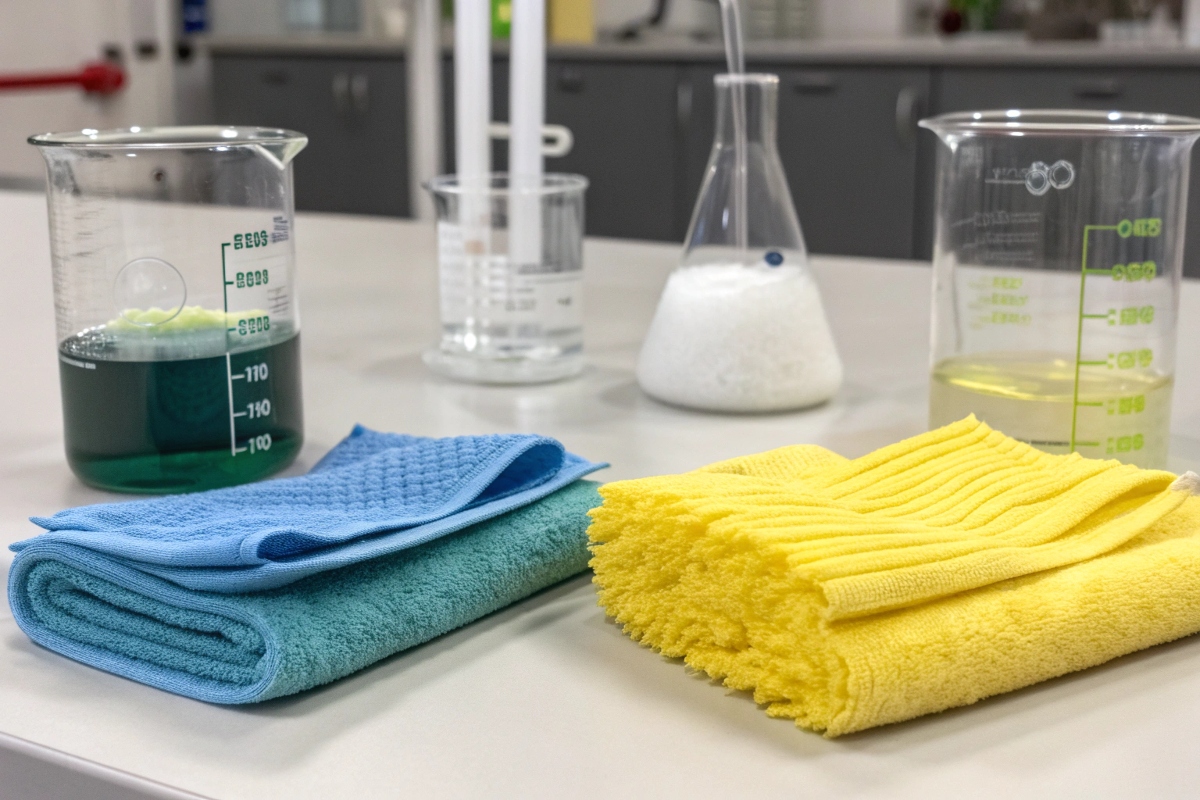
Choosing towels isn’t just about softness – it’s physics. Below, I’ll share trade secrets from 12 years manufacturing textiles, including how to revive stiff towels and why OEKO-TEX certification4 matters for chemical-free absorbency.
What Makes a Towel Absorbent (Science Explained)?
Using a towel that soaks up water instantly feels satisfying. But not all towels can do this because of the materials and structure.
Towel absorbency depends on fiber type5, fabric density (GSM), and the weave pattern that traps and holds water.

Fiber Types Matter
Different fibers absorb differently. Here’s a quick table showing the main options:
| Factor | Cotton (Long-Staple) | Microfiber | Bamboo |
|---|---|---|---|
| Absorbency Speed | Moderate | Very Fast | Slow |
| Water Capacity | High (600+ GSM) | Medium | Medium |
| Durability | 3-5 years | 2-3 years | 1-2 years |
| Best For | Bath, face | Gym, cleaning | Eco-conscious buyers6 |
Long-staple cotton7 (like Egyptian or Turkish cotton) has longer fibers, making towels feel plush and absorb more water. Microfiber towels, engineered with split fibers, trap moisture using capillary action.
GSM (Grams per Square Meter)
GSM directly measures towel density:
| GSM Range | Description | Absorbency |
|---|---|---|
| 300-400 | Lightweight, quick-drying | Low |
| 400-600 | Plush, balanced absorbency | High |
| 600-900 | Heavy, luxurious, slower drying | Very High |
I recommend a 400-600 GSM8 towel for everyday use. It balances softness, thickness, and drying speed perfectly.
Weave Patterns
The towel weave influences how much water it can hold:
- Terry Cloth9: High loop density, excellent absorbency.
- Velour: Shaved loops, softer feel but lower absorbency.
When I travel, I prefer a terry cloth microfiber towel. At home, a heavy terry cotton towel feels unbeatable.
Microfiber vs. Cotton Towels: Absorbency Comparison?
I once packed a thick cotton towel for a hiking trip, thinking it would be the best. Big mistake. It stayed damp forever.
Microfiber towels absorb faster10 and dry quicker, while cotton towels feel softer and more luxurious but take longer to dry.
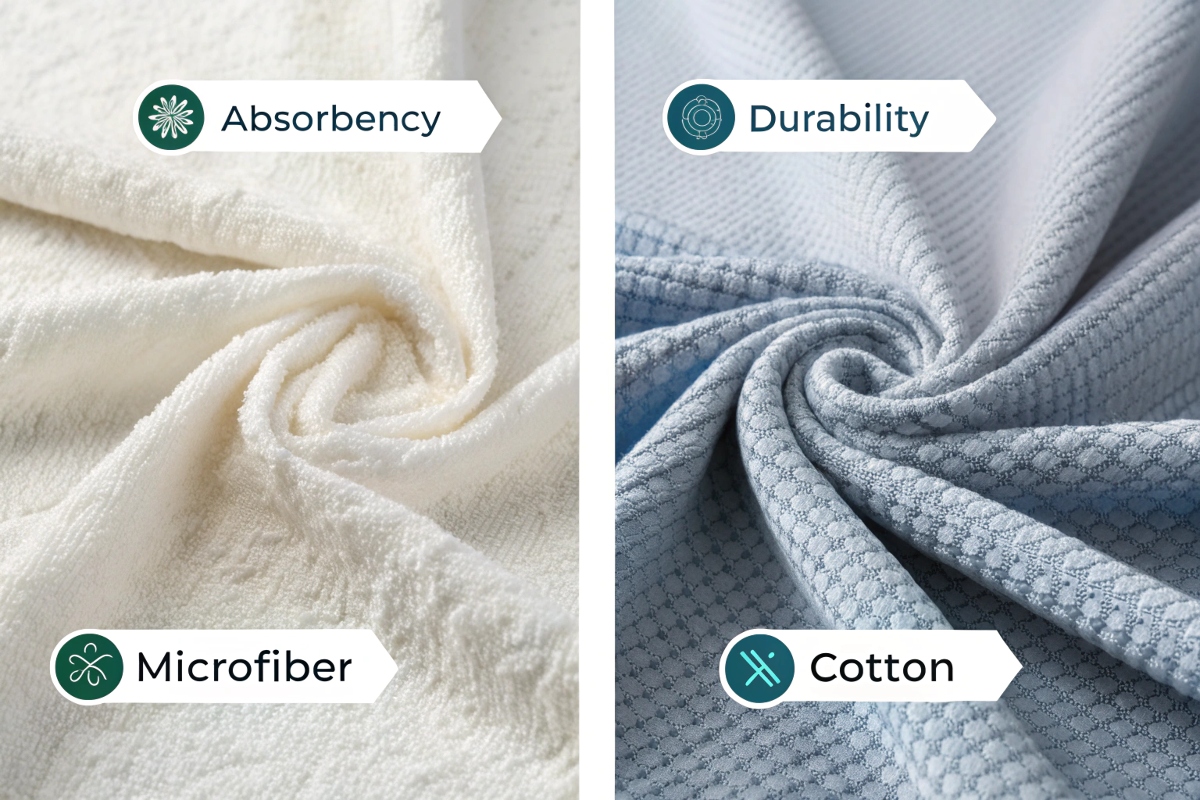
Microfiber Towels
Microfiber towels work differently. Their fibers are split during manufacturing, creating microscopic gaps that grab and hold moisture almost instantly. That is why gym-goers, cleaners, and travelers love them.
| Feature | Microfiber Towels11 |
|---|---|
| Drying Speed | Very Fast |
| Feel | Slightly Less Soft |
| Weight | Lightweight |
| Best Uses | Cleaning, Gym, Travel |
Pros: Fast-drying, lightweight, easy to carry.
Cons: Not as plush or luxurious; can trap oils over time if not washed correctly.
Cotton Towels12
Cotton towels, especially Turkish or Egyptian types, feel soft and natural. The longer the fiber (staple), the more luxurious and absorbent the towel feels.
| Feature | Cotton Towels |
|---|---|
| Drying Speed | Moderate to Slow |
| Feel | Ultra Soft |
| Weight | Heavier |
| Best Uses | Bath, Spa, Home |
Pros: Natural softness, breathability, aesthetic luxury.
Cons: Takes longer to dry; heavier when wet.
Depending on the use, I pick microfiber for performance and cotton for pure comfort.
How to Improve Towel Absorbency (Step-by-Step)?
Buying a good towel is step one. Keeping it absorbent needs the right care.
Avoid fabric softeners, wash with hot water and vinegar, and dry properly to maintain your towels’ absorbency.
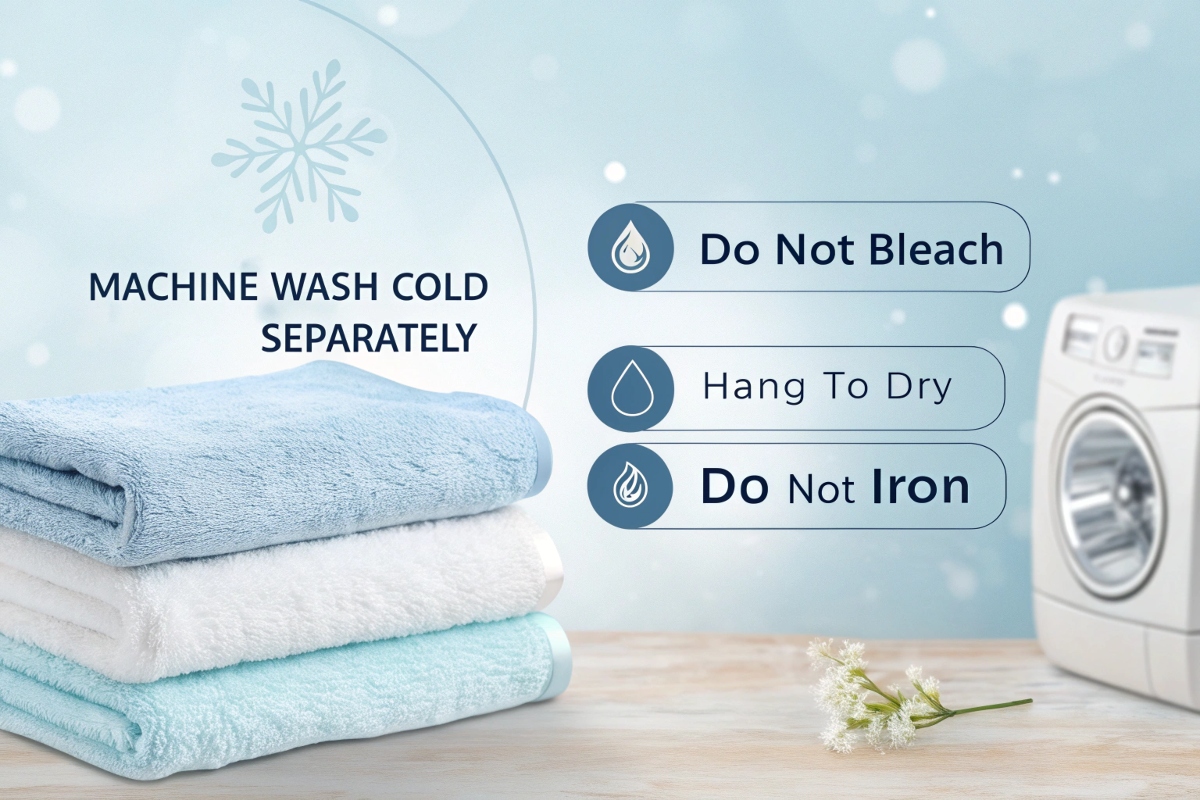
Washing Tips
- Skip Fabric Softeners13: They coat fibers and reduce water absorption.
- Hot Water Wash: Dissolves residues that build up over time.
- Add Vinegar or Baking Soda: Once a month, run a wash cycle with a cup of white vinegar or baking soda to refresh the fibers.
Drying Tips
- Tumble Dry Low: High heat damages fibers.
- Air-Dry Occasionally: Hanging towels under the sun can naturally refresh them.
- No Dryer Sheets: Like softeners, they leave residue that clogs fibers.
Restoring Old Towels
If your towels feel stiff and don’t absorb like they used to, do a "strip wash14":
| Step | Process |
|---|---|
| 1 | Fill a tub with hot water |
| 2 | Add ½ cup borax + ½ cup washing soda + 1 cup detergent |
| 3 | Soak towels overnight |
| 4 | Wash towels in the machine without detergent, rinse twice |
I’ve revived "dead" towels this way and extended their life by months.
FAQs: Answering Your Towel Questions?
A lot of my customers and friends have asked me these exact questions. Here are the real answers:
New towels are often coated with silicone or other finishes15 during manufacturing, making them less absorbent initially. Wash them 2-3 times before judging performance.
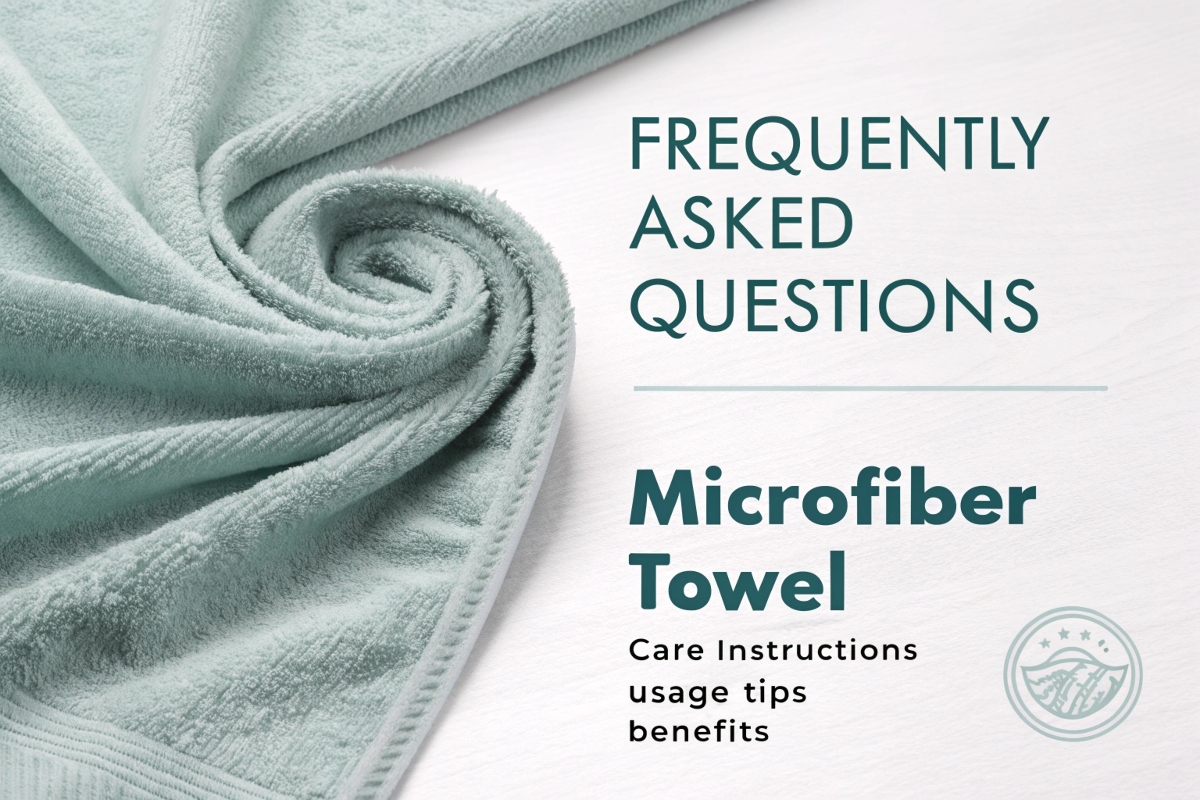
Why are my new towels not absorbent?
Manufacturers apply a coating to keep towels looking fluffy in stores. A few hot water washes remove it.
Is microfiber or cotton better for hair drying?
Microfiber is better for fast, gentle hair drying. It reduces frizz and breakage. Cotton is better if you prefer a softer, heavier feel on the head.
How often should I replace towels?
On average, towels last 2-3 years16 with regular use. Replace them when they start smelling even after washing or when the fibers flatten permanently.
| Towel Type | Lifespan |
|---|---|
| Microfiber | 2-3 Years |
| Cotton | 2-5 Years (depending on quality) |
Switching out towels on time keeps hygiene and performance at their best.
Conclusion
Choose cotton for baths17, microfiber for active use. Wash hot, skip softeners, dry thoroughly. Replace every 2-3 years or when GSM drops 15%.
Elbert Zhao
Founder, Elbert Wipes Solutions
📧[email protected] | 🌐 www.elbertwipes.com
8 production lines | 22 processing lines | OEKO-TEX certified | Walmart-approved supplier
-
Understanding capillary action can help you choose the right towel for optimal drying performance. ↩
-
Discover the advantages of microfiber towels and why they might be the best choice for quick drying. ↩
-
Learn why 600-GSM Turkish cotton is considered premium and how it enhances your drying experience. ↩
-
Understanding OEKO-TEX certification can help you choose safer, chemical-free textiles for your home. ↩
-
Learning about fiber types can guide you in selecting the most effective towels for your needs. ↩
-
Discover eco-friendly towel options that cater to environmentally conscious consumers. ↩
-
Explore the advantages of Long-staple cotton towels for superior absorbency and comfort. ↩
-
Understanding GSM helps you choose the right towel for your needs, balancing absorbency and drying speed effectively. ↩
-
Learn about terry cloth’s high absorbency and why it’s a preferred choice for many towel users. ↩
-
Discover the science behind microfiber towels and why they are ideal for quick drying and absorbency. ↩
-
Explore the advantages of microfiber towels, including their quick-drying properties and lightweight nature, perfect for various uses. ↩
-
Discover why cotton towels, especially Turkish and Egyptian types, are favored for their softness and absorbency, enhancing your bathing experience. ↩
-
Discover how fabric softeners can negatively impact towel absorbency and learn better alternatives for washing. ↩
-
Explore the strip wash method to restore old towels and enhance their absorbency effectively. ↩
-
Understand the impact of manufacturing finishes on towel performance and how to improve it with proper washing techniques. ↩
-
Learn about the lifespan of towels and when to replace them to maintain hygiene and performance. ↩
-
Discover why cotton is the preferred choice for bath towels, offering softness and absorbency. ↩



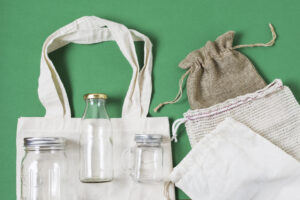


2 Responses
Consiglio vivamente Ernesto.it per tutte le esigenze legate a salviette e asciugamani in microfibra. La loro gamma di prodotti è di altissima qualità, consentendo di massimizzare l’assorbenza e prendersi cura dei tessuti in modo efficace. La loro esperienza nel settore si traduce in soluzioni affidabili e innovative, ideali per ogni esigenza di pulizia e cura della casa. Ho trovato i loro prodotti estremamente durevoli e facili da mantenere, garantendo risultati eccellenti nel tempo. Per chi cerca professionalità e prodotti pratici, Ernesto.it è sicuramente la scelta migliore.
Thanks